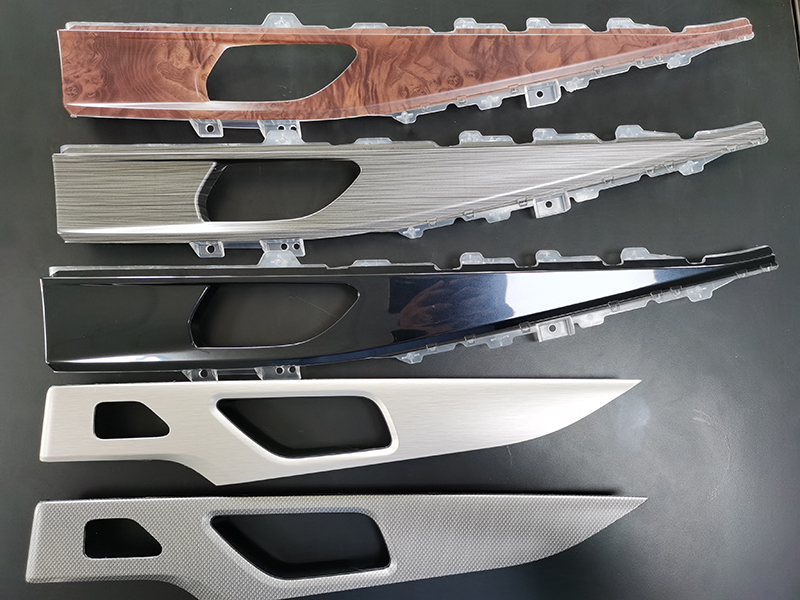Advanced Production Techniques: In-Mold Decorations Explained
Advanced Production Techniques: In-Mold Decorations Explained
Blog Article
In-Mold Decorations Demystified: Unlocking the Secrets Behind This Sophisticated Manufacturing Refine
In today's busy production landscape, in-mold decorations have emerged as a sophisticated technique that continues to intrigue industry professionals. Stay tuned as we study the underlying principles and introduce the enigmatic appeal of in-mold decors, losing light on the tricks that propel this procedure to the forefront of modern-day manufacturing approaches.
The Evolution of In-Mold Decorations
The evolution of in-mold decors has actually been noted by considerable innovations in innovation and style innovation. In-mold designs were restricted in their intricacy and color choices. Nevertheless, with the arrival of new production techniques and materials, the opportunities have actually expanded exponentially.
One secret innovation has actually been the development of high-resolution printing procedures that enable detailed styles with vivid colors to be moved onto products throughout the molding procedure. This has actually made it possible for manufacturers to accomplish photorealistic images and comprehensive graphics that were formerly unattainable.
In addition, the integration of robotics and automation in the in-mold design procedure has boosted efficiency and uniformity in applying decorations to items. This not just reduces manufacturing time yet likewise improves the general quality of the completed products.
Understanding the In-Mold Process
Marked by significant advancements in modern technology and layout innovation, the evolution of in-mold designs has led the way for a deeper understanding of the intricate process associated with creating these decorative components. The in-mold process is an innovative manufacturing method where decorative elements are integrated directly right into the final item throughout the molding process. This method includes placing a pre-designed design, such as a visuals or label, into the mold and mildew cavity before injecting the material. As the product flows into the mold and mildew, it bonds with the decoration, causing a seamless integration of the layout right into the item.
Comprehending the in-mold process needs accurate control over numerous parameters, including stress, temperature, and timing, to make certain the design adheres correctly to the item. Furthermore, choosing the ideal products is important to attaining top quality outcomes. By understanding the complexities of the in-mold procedure, suppliers can produce visually striking products with sturdy, durable designs that boost both the aesthetics and performance of the end product.
Benefits of In-Mold Decorations
Advancing item looks and toughness, in-mold designs provide a streamlined approach to incorporating ornamental aspects during the production visit the website procedure. One of the key advantages of in-mold decorations is the seamless integration of appearances, shades, and graphics straight right into the item during the molding process. In-Mold Decorations. This removes the requirement for post-production decoration methods, such as painting or printing, which can be expensive and taxing
Furthermore, in-mold decorations are highly sturdy as the graphics are encapsulated within the item, making them resistant to put on, scratches, and fading. This leads to products that preserve their visual allure and branding for a longer period, even in severe environments.
In addition to improving appearances and longevity, in-mold designs likewise provide raised style flexibility. Manufacturers can quickly include complex designs, structures, and branding elements that would be tough or impossible to attain with traditional design methods.
Applications Across Industries
Across numerous markets, in-mold decorations have actually found versatile applications that improve both the aesthetic appeal and resilience of products. In addition, the appliance sector makes use of in-mold decors to produce trendy and lasting control panels and fascia for items like stoves and refrigerators. Overall, in-mold designs use a effective and affordable way to improve the visual appeals and sturdiness of products across a vast array of markets.

Future Trends in In-Mold Technology
The development of in-mold designs is poised to proceed forming the landscape of product layout and manufacturing as Future Trends in In-Mold Innovation assure innovative options to further boost aesthetic aesthetic appeals and product toughness. Additionally, advancements in electronic printing methods are enabling manufacturers to achieve higher customization and information in in-mold decors, opening up brand-new possibilities for innovative item layouts. An additional significant fad is the assimilation of clever technologies, such as NFC tags or LED lights, directly into in-mold decors, adding practical and interactive components to items.

Verdict
In-mold decorations have revolutionized the production procedure by seamlessly integrating design elements right into items. With its numerous benefits and functional applications across various markets, in-mold technology is poised to continue advancing and shaping the future of production.
By grasping the details of the in-mold process, suppliers can produce aesthetically YOURURL.com striking items with sturdy, long-lasting decors that enhance both the looks and capability of the last item.
Advancing item aesthetic read appeals and resilience, in-mold designs provide a structured technique to incorporating decorative elements throughout the production process. One of the essential benefits of in-mold decors is the smooth assimilation of colors, textures, and graphics directly right into the item during the molding process.The development of in-mold decors is poised to continue forming the landscape of item style and production as Future Trends in In-Mold Technology promise ingenious options to further boost aesthetic appearances and item sturdiness.In-mold decors have actually revolutionized the production procedure by effortlessly integrating layout elements into products.
Report this page